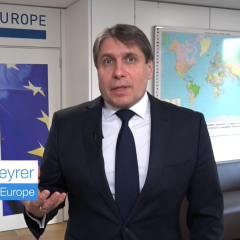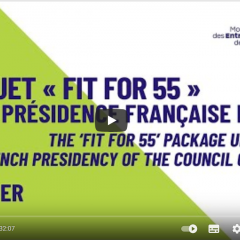The 'Fit for 55 package' - a BusinessEurope position paper
Executive summary
- The ‘Fit for 55’ package significantly deepens and broadens the decarbonisation of Europe’s economy to achieve climate neutrality by 2050. BusinessEurope supports the European Green Deal and is committed to the transition to a climate-neutral economy by mid-century. European industry is ready to take its share of responsibility and to bring solutions. The transition is expected to have positive effects such as growing markets for clean technologies.
- At the same time, determination to a climate-neutral economy is no reason to overlook challenges and transition costs. They are likely to be significant and therefore need to be thoroughly assessed and addressed in order to minimise them as much as necessary. Climate ambition must go hand in hand with industrial competitiveness and feature the zero- and low-carbon solutions to deliver on its objectives. To be able to deliver, proper framework conditions from the continuous availability of renewable and low-carbon energy at competitive prices and a historic investment programme need to be in place. Overall investment conditions need to be improved, bottlenecks removed and investments in industrial sectors accelerated.
- This paper presents BusinessEurope recommendations on ten of the legislative proposals.
- While the EU ETS (Emissions Trading System) follows the 2030 climate ambition, it needs improvements on other key aspects. Specifically, the increase in ambition should go together with sufficient carbon leakage protection for direct and indirect emissions. The participation of new sectors (buildings and road transport) should be streamlined, especially for smaller fuel suppliers.
- The Social Climate Fund needs a careful assessment, notably to avoid duplication with existing EU-level funding mechanisms. For the fund to have the most long-lasting impact, it is important that the measures financed represent a good balance between direct income support and investments, with the later much more likely to protect vulnerable populations in the long-term.
- The Carbon Border Adjustment Mechanism (CBAM) could prove to be a tool to fight carbon leakage and level the playing field. Ensuring WTO compatibility and avoiding retaliation from trading partners is key not only for CBAM sectors, but also for the EU industry as a whole. The CBAM should not be considered as an alternative to free allowances, but should complement them, until the mechanism has proven its ability to effectively prevent carbon leakage and level the playing field.
- The proposal to replace the current volume-based taxation structure in the Energy Taxation Directive (ETD) with a system based on energy content is a positive step forward to intensify investment in greener alternatives. However, we are strongly concerned about measures proposed in the ETD which will particularly harm the competitiveness of energy-intensive industries. Less favourable treatment for these sectors will make it less attractive for them to invest, including in the energy transition.
- Making renewable and low-carbon energy cheaper and more widely available is crucial. It remains to be seen whether targets for renewable energy consumption in industry, as proposed in the Renewable Energy Directive, is the right approach. The attention on fast-track permitting processes, cross-border cooperation and Power Purchase Agreements is positive.
- The Energy Efficiency Directive should focus on energy intensity instead of capping energy consumption as this risks limiting the potential for industrial decarbonisation. Innovative technologies for decarbonisation can be very energy intensive. The audits mandated by the directive should not be intertwined with provisions under the EU ETS.
- The 100% reduction, tailpipe-only 2035 target for CO2 emissions for cars and vans is exclusionary and not in line with the principle of technological neutrality. It disincentivises investments into crucial technologies such as liquid low-carbon and renewable fuels.
- The extension targets for alternative fuel infrastructure should be more ambitious to enable the emissions reduction aimed for in the package, in particular for road transport and maritime. The Alternative Fuels Infrastructure Regulation should be complemented by clearer enforcement provisions.
- The blending mandate, proposed in the ReFuelEU Aviation Regulation, coupled with an uptake obligation, should provide for sufficient flexibility. At the same time, it should be flanked by supporting measures that ensure that the supply chain for sustainable aviation fuels is developing in line with the demand.
- The emission intensity standard proposed in the FuelEU Maritime Regulation should be more flexible to recognise alternative production pathways for shipping fuels. As the proposal goes beyond the International Maritime Organisation (IMO) framework, the Commission should engage proactively with trading partners to avoid adverse reactions, and closely monitor any potential for carbon leakage.

